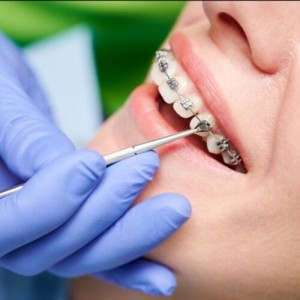
Risk indicators for carious lesions in preschool children
Objective
The aim of this study was to evaluate the risk indicators associated with noncavitated and cavitated lesions in preschool children.
Methods
The cross-sectional study included 3- to 4-year-old healthy children (N = 741) recruited in a randomized controlled clinical trial. After obtaining written informed consent, parents completed a questionnaire about their child's sociodemographic background and oral health–related behaviors and parents' oral health–related knowledge and attitude. Caries and plaque were evaluated using International Caries Detection and Assessment System-II and Visible Plaque Index (VPI), respectively. Children were grouped according to their oral health status as being caries-free (CF), having only noncavitated lesions (NC), or having cavitated lesions (CL). The least absolute shrinkage and selection operator (LASSO) sparse multinomial regression was used to study the variables using 1 standard error above the minimum criterion set at P < .05.
Results
The prevalence of children with NC and CL was 29.1% and 49.4%, respectively, with a prevalence of early childhood caries being 78.5%. The proportion of children who brushed twice or more than twice a day was highest in CF (71.7%), followed by NC (58.3%), and was least in CL (57.7%). A higher percentage of CL children (56.2%) had twice or more than twice the frequency of between-meal snacking than CF (41.7%) and NC (41.1%) (P < .001) children. The variables included with non-zero coefficients in the model were mean parental oral health knowledge, attitude score, and children's mean VPI score, and all were significant for CL; however, in NC, only VPI score was found to be significant.
Conclusions
Poor oral hygiene is the risk indicator associated with the presence of NC in preschool children, whilst poor oral hygiene and poor parental oral health knowledge and attitude are associated with the presence of cavitated lesions.
Sheetal Manchanda, Pei Liu, Gillian Hiu Man Lee, Edward Chin Man Lo, Cynthia Kar Yung Yiu. "Risk Indicators for Noncavitated and Cavitated Carious Lesions in Preschool Children." International Dental Journal, 2023, ISSN 0020-6539, https://doi.org/10.1016/j.identj.2023.03.010.
 Related articles
Related articles
Oral Hygiene & Prevention 20 August 2025
Personal oral hygiene and dental caries: A systematic review of randomised controlled trials
To conduct a systematic review of randomised trials assessing the association between personal oral hygiene and dental caries in the absence of the confounding effects of fluoride.
Pediatric dentistry 08 April 2025
Oral rehabilitation in pediatric dentistry: a clinical case report
Despite the emphasis and effort devoted to preventive dentistry, massive coronal destruction caused by dental caries or trauma is still seen in pediatric dentistry practice today.
Oral Hygiene & Prevention 15 January 2025
The aim of this study was to assess the influence of dietary and hygiene habits on the prevalence and intensity of dental caries.
Those who have had surgical obesity treatment have a higher risk of dental caries than before surgery. They also often experience a general decline in oral health. This has been shown by a thesis...
Despite its reputation as the most widely used restorative dental material currently, resin-based materials have acknowledged shortcomings.
 Read more
Read more
Editorials 10 October 2025
With proud smiles and crisp white coats, ninety-three learners from the DDS Class of 2029 and the International Dentist Pathway Class of 2028 marked the start of their dental careers at the UCSF...
Periodontology 10 October 2025
Continuous professional development (CPD) in Periodontology refers to the overall framework of opportunities that facilitate a life-long learning practice, driven by the learner-practitioner and...
TheraBreath, the #1 alcohol-free mouthwash brand in the U.S.*, has introduced a new line of dentist-formulated, clinically tested toothpastes designed to support professional oral care...
News 10 October 2025
New officers and trustees were installed at the Minnesota Dental Association’s Leadership Conference on September 19 in Minneapolis.
News 10 October 2025
Smartee Denti-Technology today announced that Professor Gang Shen, its Chief Scientist and Executive President of TaiKang ByBo Dental, has once again been named to the World’s Top 2% Scientists...















